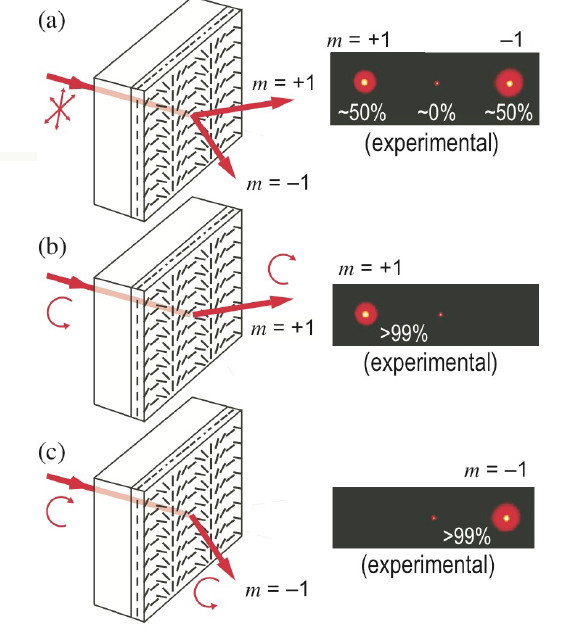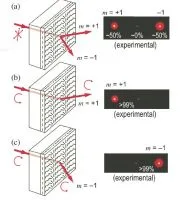ImagineOptix has been on our radar for a few years because of its development of a Polarization Grating – Polarization Conversion System (PG-PCS). This is a clever technology that uses liquid crystal based polymer layers to polarize light and create a polarization conversion component. This compact combination increases the efficiency of polarization-based display solutions (LCOS and LCD). The so-called P1 pico-projector module was developed with this component, including LEDs from Osram, an LCOS panel from Syndiant and a combiner prism from Greenlight Optics.
At SID 2015, we met with the company again for an update where we learned it is working on a number of additional light management technologies using its polarization-based chemistry. Today, its focus has shifted from pico projectors to augmented reality – specifically light management films for waveguide optics for the display solution.
According the CTO Jason Kekas, the company has now amassed a portfolio of 58 patents and applications around its light management films, supported by development and manufacturing in new state-of-the-art clean rooms in its North Carolina facility.
Essentially, the company’s films are used to manipulate the phase and retardation of light using liquid crystal polymers, liner photo polymerization and a variety of dopants. Light management films are built up through a series of layers, which are deposited, written and polymerized via UV light. The patterns need to be written to the liquid crystal with a laser. ImagineOptix uses a 2D scanning system to write (expose) the diffraction pattern using only the phase of the light (not amplitude). Photopolymer LC materials come from suppliers including Merck and Rolic.
The mastering process is time consuming – about 10 hours for a 9” square substrate. In Japan, the company has a partner which can expose plates up to 1 metre square. Fortunately, the optical components are small, so you can get a lot of devices from one substrate.
As a result, the company can fabricate polarization gratings, polarization conversion systems, multi-twist retarders, geometric phase lenses, Bragg polarization gratings and Q-plates (continuously varying retarders).
Kekas explained that its polarization based approach is unique in the industry. As shown in the figure, the gratings manipulate polarized light. In case a) for example, unpolarized light can be separated into two different angles with high efficiency. If circularly polarized light is input, the light can be deflected up or down depending on the handedness of the incoming light.

At SID, Kekas was keen to show off its waveguide optical solution for AR or VR applications. Here, the challenge is to inject a rectangular image into a very thin waveguide, then extract the image in front of the eye. For this, the company is using Bragg polarization gratings based upon polarization. These layers are thick – 2-4 microns, but each grating can achieve more than 90% efficiency. Typically, one would have three grating for the red, green and blue light for a combined efficiency of around 80%. This can be increased with anti-reflection coatings, noted Kekas.
The second figure shows how the components can be used in an AR headset waveguide. Right hand circularly polarized light is coupled into the waveguide while the left handed part is passed through. For extraction, left-handed polarized light passes from the outside world through the waveguide and Bragg grating, while the image in the waveguide can be extracted and overlaid on the external view.

Kekas says the company is getting a good reception to this concept – not surprising given the intense interst in AR at this time.

